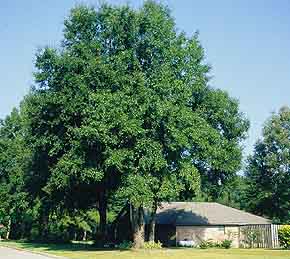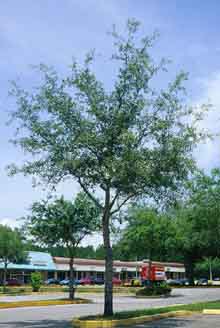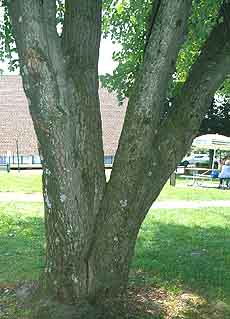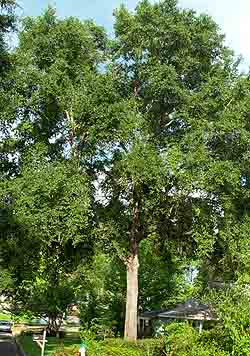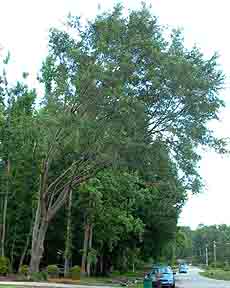Home > Tree structure basics > Canopy structure
Canopy structure
The canopy looks fine from this distance. A closer inspection is needed to determine if there are defects that could lead to tree failure. To reduce wind forces on the tree, the tree can be thinned by removing 3/4 to 2 inch diameter branches from the outer edge of the canopy, not from the interior. Reducing the longest limbs also reduces the force of wind against the tree. |
This canopy is one sided with nearly all branches on the right side. This unbalance is cause for concern. Most trees are not designed to hold themselves up with this unbalance. Thin or reduce the size of the canopy on the heavy side.
|
This canopy has one trunk to the top. This represents a very strong, durable structure. |
This canopy is growing from many trunks that originate from the same point on the trunk. This is a very weak structure that often results in failure. There is already a crack at the base indicating impending failure. |
The canopy of this laurel oak has no major defects. There is one trunk and branches are spaced apart from each other. The large branch on the left could be reduced in length or thinned toward the end to reduce likelihood of breakage. |
A leaning canopy recently exposed to the wind due to removing trees nearby is a concern. Recently exposed leaning trees can fall over. |

